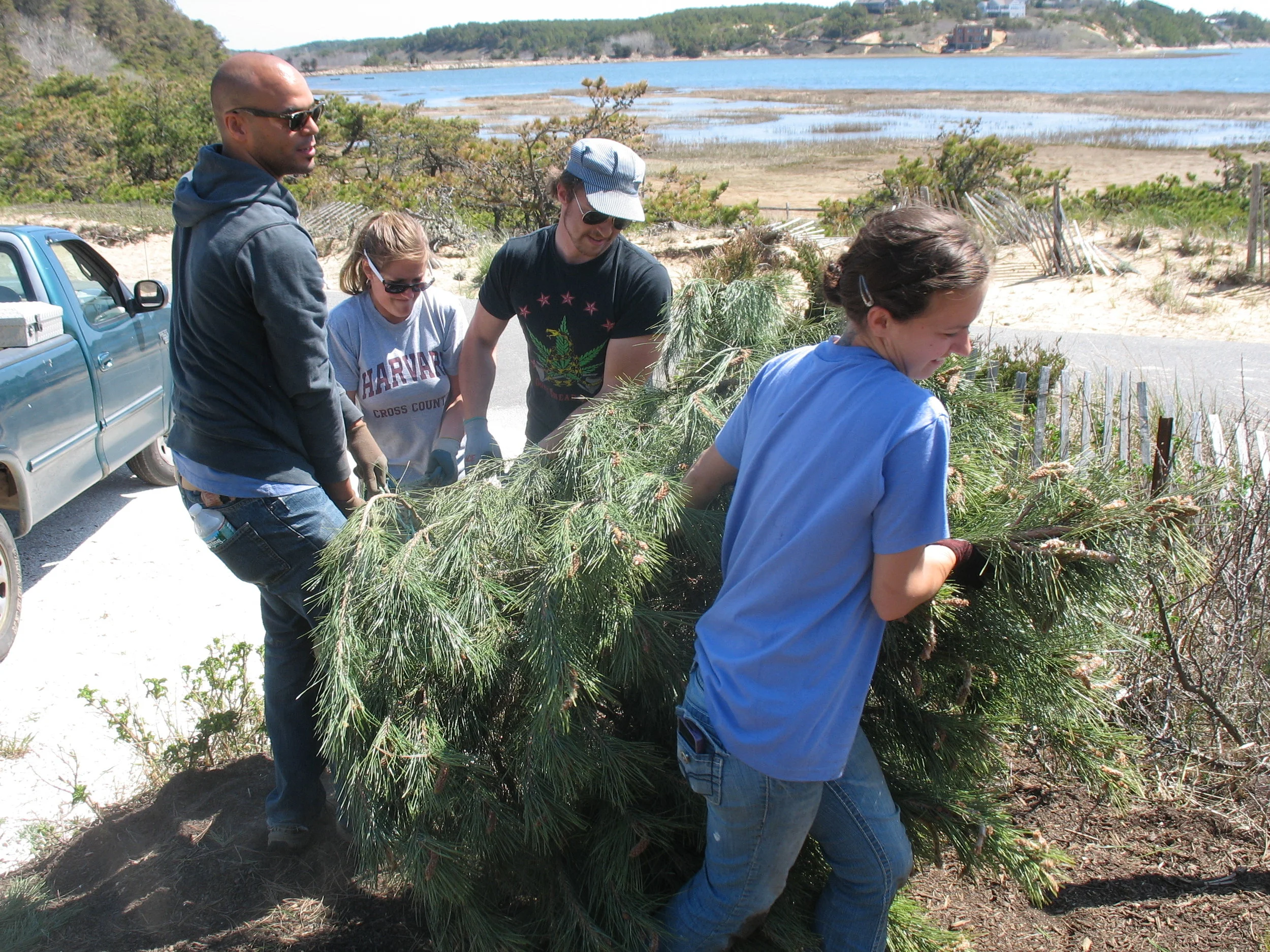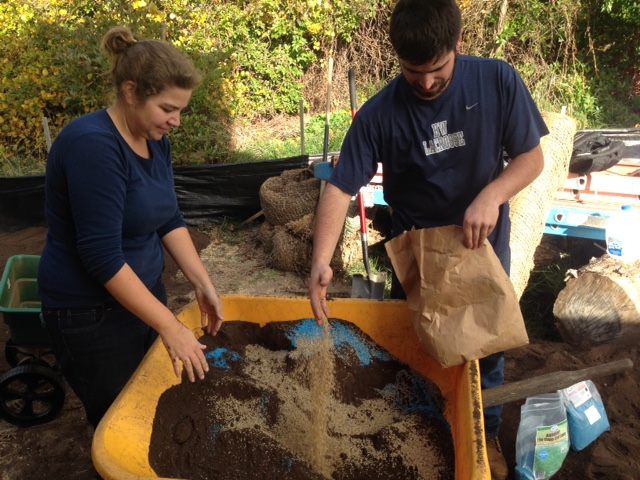REVEGETATION
REVEGETATION
Transplants
Members of our field team preparing a transplant for planting.
Safe Harbor views native vegetation as a natural resource. Prior to the start of construction projects we enter a site and remove native vegetation, for replanting on restoration sites. This can save up to $10,000 in project costs.
Excavation equiptment is used to recover larger native woody specimens.
Successfully transplanted.
REVEGETATION
NATIVE PLANTINGS
The diversity and abundance of native species is site specific. Safe Harbor's habitat restoration efforts reflect the specificity of each site.
Replanting native grasses next to a coastal marsh.
We receive native plugs from local suppliers, that jump start restoration efforts.
We receive small trees from local growers, shown here pitch pines and bear oaks.
REVEGETATION
INVASIVE PLANT MANAGEMENT
Native plants and animals co-evolved on Cape Cod. The carbohydrates created by the native plants generated protein in the animals, birds and insects that consumed them. This provided a balanced ecosystem. Introduced "Invasive Plants" did not co-evolve with native insects and animals and therefore are not utilized as a food species, and cannot contribute to the ecosystem. Invasive vegetation characteristically grows faster, may bloom earlier, and because it is not consumed is usually more abundant. We provided an educational booklet, The Dirty Dozen, that offers some guidance in recognizing and properly removing invasive vegetation. For instance, removed invasive be delivered to compost areas because the seeds would be perpetuated.
Member of our field team identifying and removing invasive species.
Result of invasive removal.
REVEGETATION
NATIVE SEEDING
On difficult sites, we utilize a mix of native grasses and sometimes native wildflowers, which we pre-mix with native compost and native bacteria mix. Safe Harbor hand collects a percentage of available native seeds. which we provide to growers to germinate for our projects. We then purchase a portion of the seeds which have now become plugs for re-vegetation efforts. We believe the use of native seeds enhances the success and survivability of restoration projects.
Safe Harbor’s Restoration Guide for the Outer Cape links native vegetation with specific habitats, exposures and height. Using site-specific vegetation for habitat restoration contributes to higher survivability. This “cookbook” style booklet makes choosing plants easier, by integrating numerous, earlier versions of planting lists. We are grateful to Howard Irwin for his review of this booklet.
Safe Harbor Environmental works with all forms of environmental permitting. Safe Harbor specializes in sustainable, coastal habitat restoration, using innovative, low cost strategies. Publications on our website that may also be relevant include: “The Dirty Dozen” Identifying and Managing 13 Invasive Plants on Cape Cod; “Steep Slope Stabilization”; and “Salt Spray Events and Coastal Vegetation” documenting the role Tropical Storm events in selecting sustainable coastal vegetation.
Safe Harbor publications may be copied, circulated, and shared for educational purposes only. This work may be cited but in no way should it be altered, transformed, built upon, or used as an endorsement of other work or for commercial purposes. Gordon Peabody, Safe Harbor Environmental, November, 2011
Habitat Restoration Guide for Planting Vegetation on the Outer Cape
HABITAT RESTORATION GUIDE Click on the above link to download your own free copy of this booklet.
Safe Harbor Environmental Services, 2012












